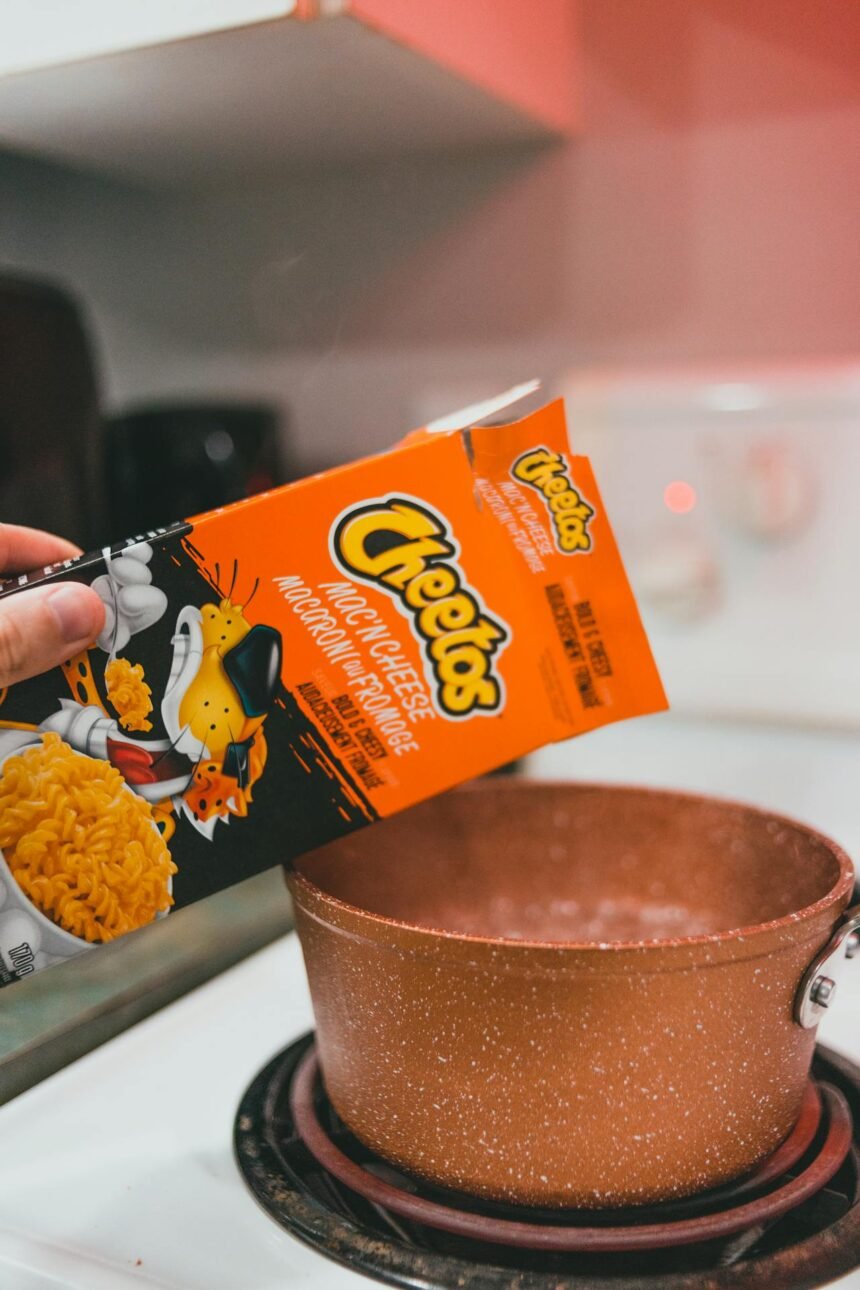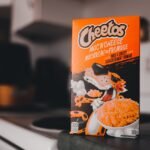Dive into the cheesy, crunchy world of Cheetos and uncover the truth about their gluten content in this comprehensive guide. Perfect for snack enthusiasts and those with gluten sensitivities alike, this article explores everything from Cheetos’ ingredients to Frito-Lay’s official stance on gluten. Learn about potential cross-contamination risks, how to read labels effectively, and discover gluten-free alternatives that satisfy your cravings.
Whether you’re a die-hard Cheetos fan or simply curious about gluten in popular snacks, this in-depth analysis provides all the information you need to make informed snacking decisions. Get ready to crunch into the facts and find out if your favourite cheesy treat is truly gluten-free.
Introduction: The Gluten-Free Dilemma and Cheetos
Are Cheetos gluten free? This question has been on the minds of many snack lovers, especially those with coeliac disease or gluten sensitivity. In this comprehensive guide, we’ll dive deep into the world of Cheetos and gluten, exploring everything you need to know to make informed snacking decisions.
Cheetos, those crunchy, cheesy, and undeniably addictive snacks, have been a staple in many households for decades. However, with the increasing awareness of gluten-related health issues, it’s crucial to understand whether these beloved snacks are safe for those avoiding gluten.
In the following sections, we’ll explore the ingredients in Cheetos, Frito-Lay’s official stance on gluten, potential cross-contamination risks, and alternatives for those who need to steer clear of gluten. Whether you’re a die-hard Cheetos fan or simply curious about gluten in popular snacks, this article will provide you with all the information you need.
So, are Cheetos gluten free? Let’s find out.
Understanding Gluten and Its Impact on Health
Before we dive into the specifics of Cheetos and gluten, it’s essential to understand what gluten is and why it matters to so many people. Gluten is a protein found in wheat, barley, and rye. For most people, consuming gluten doesn’t cause any issues. However, for those with coeliac disease or non-coeliac gluten sensitivity, gluten can trigger a range of health problems.
Coeliac disease is an autoimmune disorder where the ingestion of gluten leads to damage in the small intestine. Symptoms can include digestive issues, fatigue, and even long-term health complications if left untreated. Non-coeliac gluten sensitivity, while not an autoimmune condition, can still cause uncomfortable symptoms when gluten is consumed.
The growing awareness of these conditions has led to an increased demand for gluten-free products. Many food manufacturers, including snack companies, have responded by offering gluten-free options or clarifying the gluten status of their existing products.
When it comes to processed foods like Cheetos, determining gluten content isn’t always straightforward. While the main ingredients might be gluten-free, there are other factors to consider, such as:
- Additional ingredients or flavourings that might contain gluten
- Cross-contamination during the manufacturing process
- Different formulations in various countries
Understanding these complexities is crucial when asking, “Are Cheetos gluten free?” It’s not just about the ingredients list; it’s about the entire production process and the manufacturer’s ability to guarantee a gluten-free product.
As we delve deeper into the gluten status of Cheetos, keep in mind that for those with coeliac disease or severe gluten sensitivity, even trace amounts of gluten can cause problems. This is why it’s so important to have accurate information about the foods we consume, especially popular snacks like Cheetos.
Cheetos Ingredients: A Closer Look
To answer the question “Are Cheetos gluten free?”, we need to start by examining the ingredients. Cheetos, in their most basic form, are made from cornmeal, vegetable oil, and cheese seasoning. Let’s break down these components and their potential gluten content:
- Cornmeal: The main ingredient in Cheetos is cornmeal, which is naturally gluten-free. Corn is not a gluten-containing grain, so this base ingredient doesn’t pose a problem for those avoiding gluten.
- Vegetable Oil: The oils used in Cheetos, typically sunflower, corn, or canola oil, are also naturally gluten-free.
- Cheese Seasoning: This is where things can get tricky. The cheese seasoning is a blend of various ingredients, including cheese cultures, salt, and artificial colours. While these ingredients are typically gluten-free, some additives or anti-caking agents used in the seasoning could potentially contain gluten.
Additional ingredients in Cheetos may include:
- Whey
- Monosodium Glutamate (MSG)
- Artificial and Natural Flavours
- Various Emulsifiers and Preservatives
While most of these ingredients are generally gluten-free, it’s the “natural flavours” and certain additives that can sometimes be derived from gluten-containing sources.
It’s important to note that ingredients can vary between different Cheetos flavours and even between countries. For example, Cheetos sold in the UK might have a slightly different formulation compared to those sold in the US.
Here’s a quick reference table for common Cheetos ingredients and their gluten status:
| Ingredient | Gluten Status |
|---|---|
| Cornmeal | Gluten-Free |
| Vegetable Oil | Gluten-Free |
| Cheese Cultures | Typically Gluten-Free |
| Whey | Gluten-Free |
| MSG | Gluten-Free |
| Natural Flavours | Potentially Contains Gluten |
While the main ingredients in Cheetos are gluten-free, the potential for gluten to be present in additives or through cross-contamination means we can’t definitively answer “Are Cheetos gluten free?” based on ingredients alone. We need to look at the manufacturer’s statements and production processes for a more complete picture.

Frito-Lay’s Official Stance on Gluten in Cheetos
When it comes to answering “Are Cheetos gluten free?”, it’s crucial to consider the official stance of Frito-Lay, the company that manufactures Cheetos. Frito-Lay has been relatively transparent about the gluten status of their products, including Cheetos.
According to Frito-Lay’s official statements:
- Many varieties of Cheetos are considered gluten-free by U.S. standards, containing less than 20 parts per million (ppm) of gluten.
- Frito-Lay maintains a list of products that meet this gluten-free threshold, which is updated regularly.
- However, Cheetos are not certified gluten-free by any third-party organisation.
- The company acknowledges that while they have processes in place to minimise cross-contact with gluten-containing ingredients, they cannot guarantee that cross-contact will never occur.
Here’s a breakdown of some popular Cheetos varieties and their gluten status according to Frito-Lay (as of the last update):
| Cheetos Variety | Gluten-Free Status |
|---|---|
| Crunchy Cheese | Gluten-Free (<20 ppm) |
| Flamin’ Hot | Gluten-Free (<20 ppm) |
| Puffs | Gluten-Free (<20 ppm) |
| Baked Cheese | Gluten-Free (<20 ppm) |
| Fantastix! | Not Gluten-Free |
It’s important to note that this information applies specifically to products manufactured and sold in the United States. Frito-Lay advises consumers that products in other countries may have different formulations and gluten statuses.
While Frito-Lay’s stance provides some reassurance for those asking “Are Cheetos gluten free?”, there are a few caveats to consider:
- The gluten-free status is based on testing to less than 20 ppm, which meets FDA standards but may not be suitable for extremely sensitive individuals.
- The lack of third-party certification means that the gluten-free claim is based solely on Frito-Lay’s internal testing and processes.
- Product formulations can change over time, so it’s always advisable to check the packaging or Frito-Lay’s website for the most up-to-date information.
For those with coeliac disease or severe gluten sensitivity, Frito-Lay recommends exercising caution and consulting with a medical professional before consuming Cheetos or any of their products.
While Frito-Lay’s transparency is commendable, the answer to “Are Cheetos gluten free?” still comes with some qualifications. In the next section, we’ll explore the potential risks of cross-contamination in more detail.
Cross-Contamination Risks: Are Cheetos Truly Gluten-Free?
When considering the question “Are Cheetos gluten free?”, it’s crucial to understand the concept of cross-contamination and how it applies to the production of these popular snacks. Cross-contamination occurs when gluten-free foods come into contact with gluten-containing ingredients or surfaces during manufacturing, packaging, or handling.
Frito-Lay, the maker of Cheetos, produces a wide range of snack foods, some of which do contain gluten. This raises concerns about potential cross-contamination risks in the production of Cheetos, even if the ingredients themselves are gluten-free.
Here are some key points to consider regarding cross-contamination risks for Cheetos:
- Shared Facilities: Cheetos are often produced in facilities that also process gluten-containing products. While Frito-Lay has protocols in place to minimise cross-contact, the risk cannot be entirely eliminated.
- Production Lines: Even if dedicated gluten-free lines are used, there’s still a potential for airborne gluten particles to contaminate the product.
- Ingredient Sourcing: While the main ingredients in Cheetos are gluten-free, some additives or flavourings might be produced in facilities that also handle gluten-containing ingredients.
- Cleaning Procedures: The effectiveness of cleaning procedures between production runs can impact the likelihood of cross-contamination.
- Testing Limitations: While Frito-Lay tests its products to ensure they contain less than 20 ppm of gluten, this level might still be problematic for extremely sensitive individuals.
Given these factors, it’s understandable why Frito-Lay doesn’t label Cheetos as “certified gluten-free” despite considering many varieties to be gluten-free by FDA standards.
For those with coeliac disease or severe gluten sensitivity, these cross-contamination risks are not insignificant. Some health professionals advise their most sensitive patients to avoid products like Cheetos that are produced in shared facilities, even if they’re labelled as gluten-free.
It’s also worth noting that the risk of cross-contamination can vary between different production facilities and even between different batches of the same product. This variability adds another layer of complexity to the question “Are Cheetos gluten free?”
While Frito-Lay’s efforts to minimise cross-contamination are commendable, individuals with gluten-related disorders must weigh the potential risks against their personal tolerance levels. For some, the minimal risk might be acceptable, while others may prefer to err on the side of caution and choose certified gluten-free alternatives.
In the next section, we’ll explore some of these gluten-free alternatives that can satisfy your cravings for cheesy, crunchy snacks without the worry of gluten exposure.
Gluten-Free Alternatives to Cheetos
For those who love the cheesy, crunchy goodness of Cheetos but need to avoid gluten, there are fortunately many alternatives available. These snacks aim to replicate the flavour and texture of Cheetos while ensuring they’re completely gluten-free. Let’s explore some popular options that can help satisfy your cravings without the worry of gluten exposure.
- Hippeas Organic Chickpea Puffs
- Made from chickpea flour
- Certified gluten-free
- Available in various flavours, including Vegan White Cheddar
- Simply 7 Quinoa Chips
- Made from quinoa flour
- Gluten-free and non-GMO
- Offers a cheesy flavour option
- Pipcorn Cheese Balls
- Made from heirloom corn
- Certified gluten-free
- Replicates the texture of Cheetos Puffs
- Beanfields Bean Chips
- Made from navy beans and rice
- Certified gluten-free
- Offers a Nacho flavour similar to Cheetos
- Lesser Evil “No Cheese” Cheesiness
- Made from cassava flour
- Certified gluten-free and vegan
- Mimics cheese flavour using nutritional yeast
Here’s a comparison table of these alternatives:
| Product | Main Ingredient | Certified Gluten-Free? | Flavour Profile |
|---|---|---|---|
| Hippeas | Chickpea Flour | Yes | Cheesy, Savoury |
| Simply 7 | Quinoa Flour | Yes | Cheesy, Light |
| Pipcorn | Heirloom Corn | Yes | Cheesy, Puffy |
| Beanfields | Navy Beans, Rice | Yes | Nacho, Crunchy |
| Lesser Evil | Cassava Flour | Yes | Cheesy, Crispy |
These alternatives not only provide a gluten-free option but often come with additional benefits such as being higher in protein or fibre compared to traditional Cheetos. They’re also often made with more natural ingredients and may be suitable for other dietary restrictions like vegan or dairy-free diets.
For those who enjoy cooking, there are also numerous recipes available online for homemade, gluten-free cheese puffs. These often use ingredients like tapioca flour or cornmeal to replicate the texture of Cheetos.
While these alternatives may not be exact replicas of Cheetos, they offer safe and tasty options for those asking, “Are Cheetos gluten free?” and finding that the risk is too high for their comfort level. Many snack lovers find that these alternatives satisfy their cravings just as well as the original, and some even prefer the taste and nutritional profile of these gluten-free options.
Remember, when trying new gluten-free products, always check the label to ensure they meet your dietary needs, as formulations can change over time.
Reading Labels: Tips for Gluten-Free Snacking
When trying to determine “Are Cheetos gluten free?” or assess the gluten content of any snack, reading and understanding food labels is crucial. This skill is especially important for those with coeliac disease or gluten sensitivity. Here are some tips to help you navigate food labels and make informed decisions about your snack choices:
- Look for “Gluten-Free” Certification:
- Products certified by organisations like the Gluten-Free Certification Organization (GFCO) or Coeliac UK have been rigorously tested.
- These certifications provide the highest level of assurance for gluten-free status.
- Check for “Gluten-Free” Claims:
- In many countries, including the UK and US, products labelled “gluten-free” must contain less than 20 ppm of gluten.
- However, remember that not all gluten-free products are certified by third-party organisations.
- Scan the Allergen Statement:
- Many products have a “Contains” statement listing major allergens, including wheat.
- In the EU and UK, gluten-containing grains must be clearly labelled.
- Read the Ingredients List:
- Look out for obvious sources of gluten like wheat, barley, rye, and oats (unless specified as gluten-free oats).
- Be aware of less obvious sources like malt, brewer’s yeast, and some food starches.
- Be Cautious of “May Contain” Statements:
- These indicate potential cross-contamination risks.
- For highly sensitive individuals, it’s often best to avoid products with such warnings.
- Understand Misleading Terms:
- “Wheat-free” doesn’t necessarily mean gluten-free.
- “Natural flavours” can sometimes contain gluten-derived ingredients.
- Research Unfamiliar Ingredients:
- If you’re unsure about an ingredient, look it up or contact the manufacturer for clarification.
- Be Aware of Country Differences:
- Labelling laws and definitions of “gluten-free” can vary between countries.
- A product considered gluten-free in one country might not meet the standards in another.
- Use Smartphone Apps:
- There are several apps available that can help you quickly check if a product is gluten-free by scanning the barcode.
- Stay Updated:
- Product formulations can change over time.
- Regularly check labels, even for products you’ve previously deemed safe.
Here’s a quick reference table for common gluten-containing ingredients to watch out for:
| Ingredient | Contains Gluten? |
|---|---|
| Wheat | Yes |
| Barley | Yes |
| Rye | Yes |
| Malt | Yes |
| Brewer’s Yeast | Usually |
| Oats | Unless specified gluten-free |
| Modified Food Starch | Possibly |
| Dextrin | Possibly |
Remember, when it comes to snacks like Cheetos, even if the main ingredients are gluten-free




